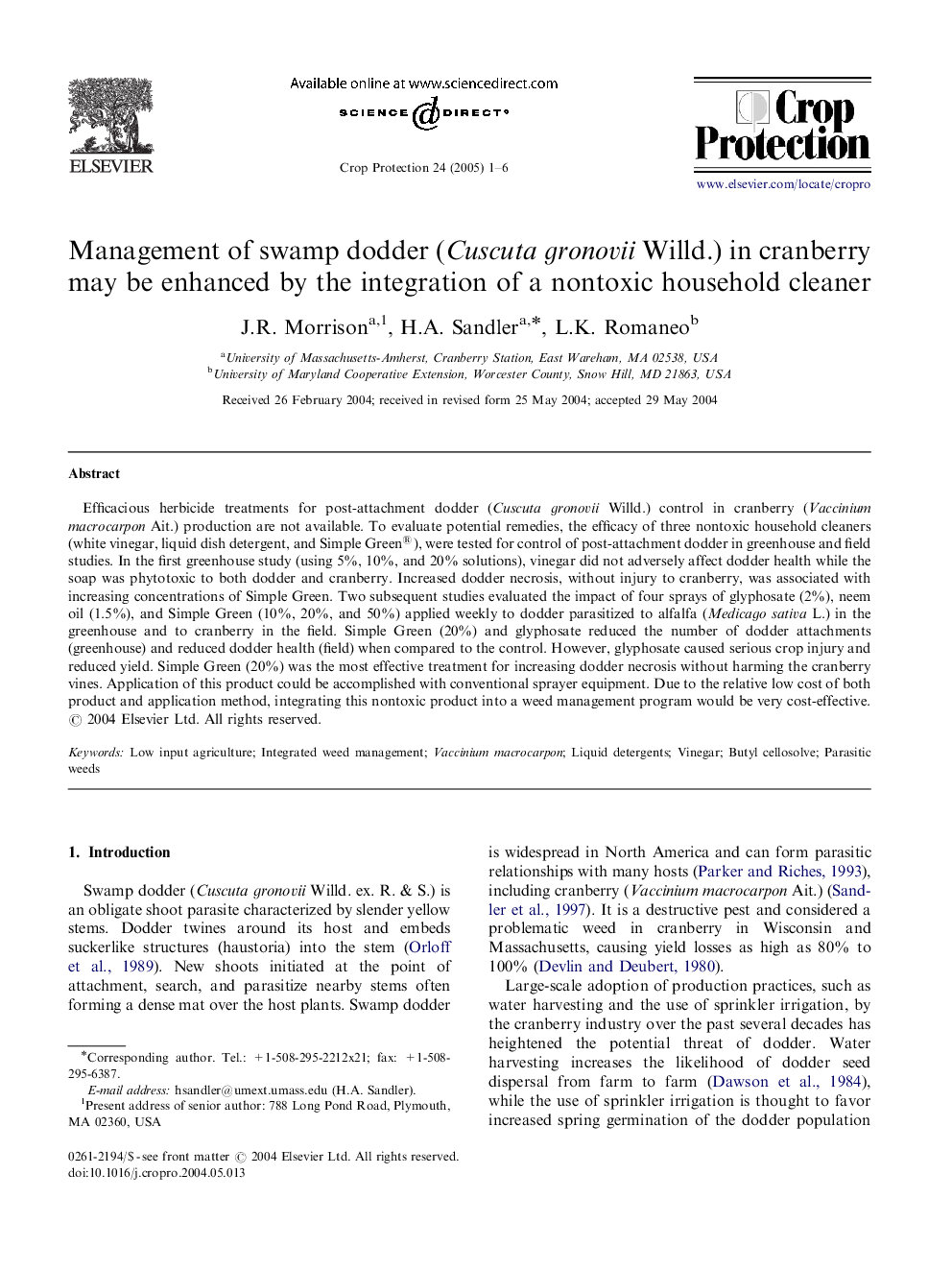| Article ID | Journal | Published Year | Pages | File Type |
|---|---|---|---|---|
| 9472866 | Crop Protection | 2005 | 6 Pages |
Abstract
Efficacious herbicide treatments for post-attachment dodder (Cuscuta gronovii Willd.) control in cranberry (Vaccinium macrocarpon Ait.) production are not available. To evaluate potential remedies, the efficacy of three nontoxic household cleaners (white vinegar, liquid dish detergent, and Simple Green®), were tested for control of post-attachment dodder in greenhouse and field studies. In the first greenhouse study (using 5%, 10%, and 20% solutions), vinegar did not adversely affect dodder health while the soap was phytotoxic to both dodder and cranberry. Increased dodder necrosis, without injury to cranberry, was associated with increasing concentrations of Simple Green. Two subsequent studies evaluated the impact of four sprays of glyphosate (2%), neem oil (1.5%), and Simple Green (10%, 20%, and 50%) applied weekly to dodder parasitized to alfalfa (Medicago sativa L.) in the greenhouse and to cranberry in the field. Simple Green (20%) and glyphosate reduced the number of dodder attachments (greenhouse) and reduced dodder health (field) when compared to the control. However, glyphosate caused serious crop injury and reduced yield. Simple Green (20%) was the most effective treatment for increasing dodder necrosis without harming the cranberry vines. Application of this product could be accomplished with conventional sprayer equipment. Due to the relative low cost of both product and application method, integrating this nontoxic product into a weed management program would be very cost-effective.
Related Topics
Life Sciences
Agricultural and Biological Sciences
Agronomy and Crop Science
Authors
J.R. Morrison, H.A. Sandler, L.K. Romaneo,
